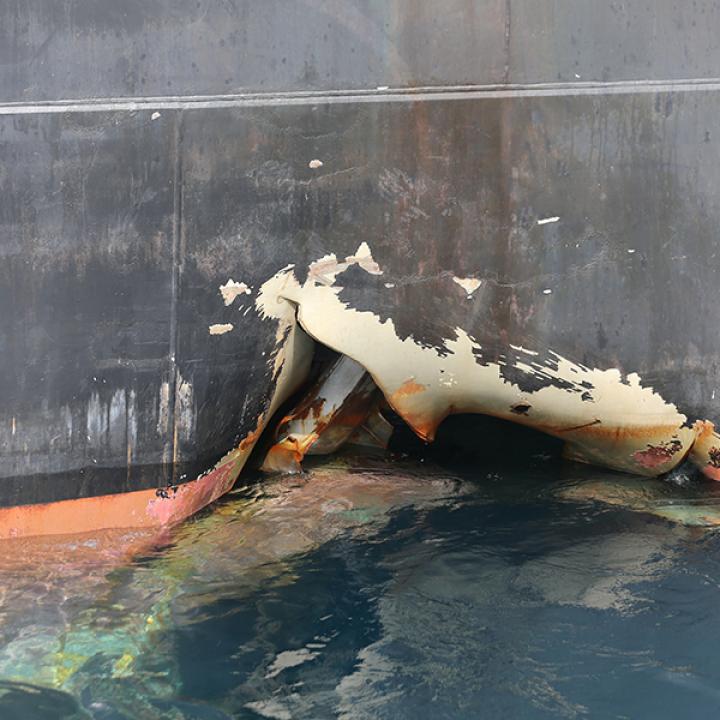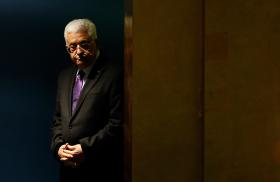

Attacks on tankers near the Strait of Hormuz and Saudi Arabia’s main internal pipeline have accelerated the emerging Gulf crisis and could cause prices to spike worldwide.
Early in the morning of May 14, drones flying about 500 miles from Houthi-controlled territory in Yemen attacked two pumping stations on Saudi Arabia’s major East-West Pipeline. Officials in various quarters quickly asserted that the incident had been orchestrated by Iran, which has been supporting the Houthi rebels in their war against the internationally recognized Yemeni government and its coalition partners in Riyadh and the United Arab Emirates. Iranian involvement is also suspected in the May 12 attacks on four tankers anchored in UAE waters near Fujairah in the Gulf of Oman.
If these accusations prove true, the tactically simple but strategically momentous attacks would be Tehran’s apparent response to the recent U.S. deployment of a carrier strike group, B-52 bombers, and other forces to the region—a decision that was itself spurred by newly identified Iranian threats and the Trump administration’s desire to further curtail the regime’s oil exports. Iran’s longstanding position is that if it cannot sell oil via its only export route, the Strait of Hormuz, then no other country will be permitted to do so either. The choice of targets seems like Tehran’s way of reminding Riyadh and Abu Dhabi that they are vulnerable despite their American security umbrella—both the East-West Pipeline and the UAE line that terminates at Fujairah are major export routes that bypass the strait.
In all, Saudi Arabia, the UAE, Iran, and their Persian Gulf neighbors Iraq, Kuwait, Bahrain, Qatar, and Oman supply around 20 percent of the world’s daily oil needs. Their significance is even greater in terms of traded oil, particularly regarding their main markets in Asia. So far, the incidents have had little impact on oil prices, probably because of ongoing economic uncertainty surrounding the difficult U.S.-China trade talks. But a direct military confrontation would lead to a spike.
The chances of such escalation are currently unclear because few public details have been released about the drone and tanker incidents. The Saudi oil minister stated that one facility had been set on fire by a drone, and the pipeline has been shut down for repairs. Any confirmation of Iranian origins behind the drones would escalate the crisis to some degree.
Iranian fingerprints in Fujairah would stoke tensions as well. The photographic evidence released so far has shown a Norwegian tanker holed in the stern at the waterline, likely by a significant explosive charge; repairs may take months. The damage to the two Saudi tankers and smaller UAE refueling vessel has not been shown.
Speedily increasing security measures is no guarantee of preventing further attacks. The Saudi vessels were anchored many miles offshore in an area teeming with other ships waiting for bunkering as well as smaller craft. And the Houthi drones probably flew undetected because Saudi radars tend to be more focused on aircraft or missile attacks. (In June 2017, Houthi forces fired an Iranian Qiam ballistic missile at Yanbu, the East-West Pipeline’s Red Sea terminal; another seven missile attacks were launched at Riyadh between November 2017 and June 2018.)
Determining the appropriate U.S. response will be a challenge. The USS Abraham Lincoln and its strike group arrive in the area imminently, but they may be safer staying outside the comparatively narrow and shallow Strait of Hormuz. If Iran is deemed responsible, Gulf allies will presumably support a firm retort, but they may balk at being dragged into a major confrontation. European allies are already concerned by President Trump’s withdrawal from the Iran nuclear deal and will likely seek to dial back the crisis through diplomatic overtures, especially in the absence of firm evidence against Iran.
For its part, Tehran appears to be signaling that it has made its point—or it could simply be taking a breather between deniable operations in order to further undermine America’s unity with its allies. On May 14, Supreme Leader Ali Khamenei stated: “There won’t be any war. The Iranian nation has chosen the path of resistance. We don’t seek a war, and they don’t either. They know it’s not in their interests.” Wherever the crisis heads, decisionmaking on all sides will be influenced by how world oil markets respond to the tensions.
Simon Henderson is the Baker Fellow and director of the Bernstein Program on Gulf and Energy Policy at The Washington Institute.



